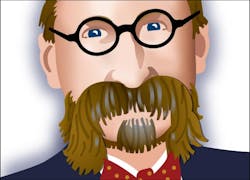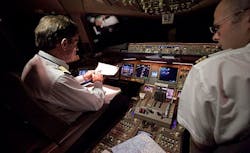Such a wealth of aerospace technological capability is unmatched in history, yet there's one problem that technology itself cannot solve: trained human pilots for manned and unmanned aircraft.
I know we've all read about the growing sophistication of machine autonomy that promises to replace the human pilot in most cockpits. Still, even for unmanned aerial vehicles (UAVs), trained human pilots must be part of the process.
It's true that automation technology enables one human UAV pilot to fly several unmanned aircraft at the same time, yet without a pilot in the loop somewhere, all those high-tech UAVs stay on the runway.
It's much the same with commercial aircraft. The day may be coming when the flying public would board automated passenger jets without human pilots in their cockpits, but let's be honest, that day hasn't arrived yet, and may not for quite a while.
Related: Real intelligence, or artificial intelligence; you be the judge
Against this backdrop we have reports of pilot shortages not only for military UAVs, but also for commercial passenger aircraft. Real or not, these reported pilot shortages demonstrate once again the crucial importance of trained and experienced humans in flying aircraft.
Early this month the Daily Beast reported that the U.S. military's UAV fleet is at the breaking point because of too few qualified MQ-1 Predator and MQ-9 Reaper drone pilots to meet demand from military commanders in the field for UAV reconnaissance and attack missions.
On the civil aviation side, representatives from the White House, Federal Aviation Administration (FAA), major U.S. airlines, and regional carriers are meeting today at Embry-Riddle Aeronautical University in Daytona Beach, Fla., for a pilot supply and demand summit.
Major passenger aircraft builder the Boeing Co. has forecast a need in North America over the next two decades for 88,000 new commercial pilots.
This forecast of a pilot shortage is controversial in itself. While Boeing and major airlines say the nation needs more trained pilots, others that include the Airline Pilots Association (ALPA) pilots labor union contend the problem isn't too few pilots, but low pay and working conditions for pilots.
ALPA and other commercial aviation experts say plenty of qualified pilots would step up if pay and working conditions were to improve. Whether or not these pilots shortages are real or perceived, however, is beside the point.
The real issue involves the importance of the human in the loop where aircraft are concerned. Even the most advanced automation technology can't substitute for pilot experience and the instincts gained from decades in the cockpit.
Some technology experts claim that the day is upon us when the capabilities of robots and artificial intelligence will surpass humans in complex tasks like flying airplanes. Forgive me if I sound like a backward Luddite, but I'm not seeing it, and I've been paying attention to artificial intelligence and automation technology now for more than three decades.
Maybe the automatic pilot of disabled jetliner could make the quick decisions necessary to save everyone on board like U.S. Airways pilot Chesley B. "Sully" Sullenberger did six years ago.
Sully's Airbus A320-200 with 150 passengers and five crew members aboard hit a flock of geese on climb-out from New York LaGuardia Airport and lost all engine power. He had a choice: he could try gliding back to LaGuardia, try to make nearby Teterboro Airport in New Jersey, or ditch the plane in the Hudson River.
Sully chose the third option. Nobody was seriously hurt as the jetliner skimmed onto the Hudson River's surface; just wet and scared. Could a sophisticated auto pilot do that? Maybe ...
..., but maybe not. A computer's wrong calculation could turn a situation like that into 155 deaths aboard the aircraft and an untold number of dead and injured on the approaches to LaGuardia or Teterboro if that plane landed short.
I'm a big fan of advanced technologies like machine automation and artificial intelligence. Still, technology isn't a cure-all for what ails the aviation industry, and we can't lose sight of the value of human intelligence, trained pilots, and the gut instincts gained from years in the cockpit.




